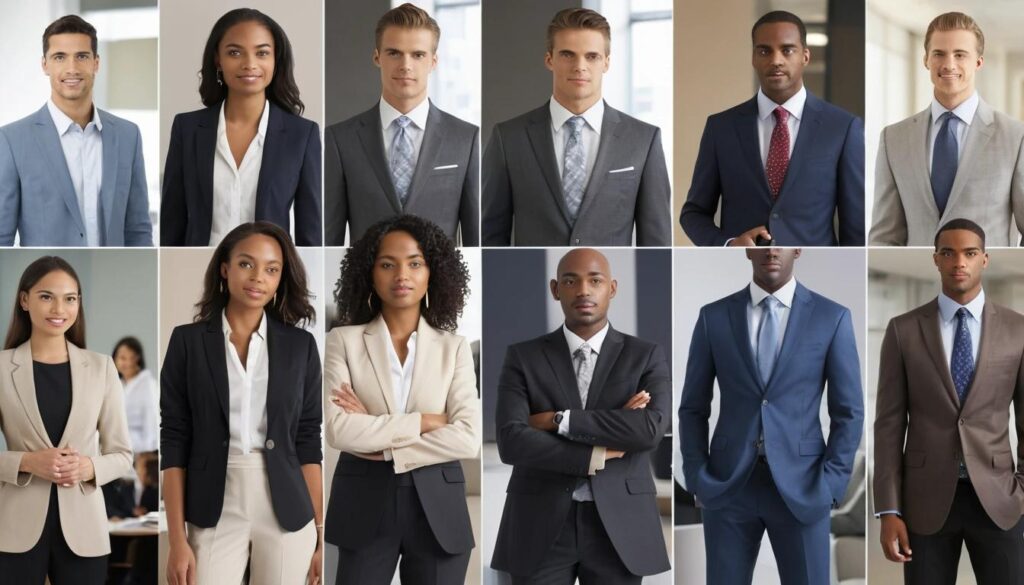In a world where first impressions can make or break opportunities, the phrase “dress for success” has never been more relevant. The clothes we wear do more than just serve as a barrier against the elements; they can influence how we feel about ourselves and how others perceive us. This blog post delves into the psychology behind fashion choices, offering insights into how dressing well can elevate both your confidence and your overall effectiveness in various social and professional settings.

The Importance of First Impressions
Studies have shown that it takes only a few seconds for someone to form an opinion about you based on your appearance. According to research published in the International Journal of Psychological Studies, first impressions can be made as quickly as 100 milliseconds. This emphasizes the importance of choosing your attire carefully, as it can profoundly impact how others perceive your competence, reliability, and professionalism.
The Role of Clothing in Self-Perception
How we dress affects not only how others see us but also how we perceive ourselves. The concept of “enclothed cognition” suggests that the clothes we wear can influence our mental state and behavior. For instance, when wearing formal attire, individuals are often more focused and better able to think critically. Conversely, casual clothing can sometimes lead to a less responsible, more relaxed mindset.
Key Takeaway: Choose outfits that not only look good but also empower you. The right clothing can uplift your mood and enhance your performance.
Understanding Context: Dressing for the Occasion
Different settings call for different clothing choices. Understanding the context of an event is crucial in determining what to wear. Whether it’s a job interview, a networking event, or a casual gathering, each occasion has its guidelines.
Business Attire Versus Casual Wear
- Business Professional: This attire is typically reserved for formal environments. Tailored suits, blouses, and dress shoes are standard. This type of clothing conveys authority and seriousness.
- Business Casual: While still professional, this attire allows for some personal expression—think slacks or chinos paired with a smart shirt. This balance can make you appear approachable while still maintaining professionalism.
- Casual: Casual wear can vary widely but should still look intentional. Opt for clean, stylish clothing rather than something that feels too sloppy.
Key Takeaway: Research the dress code of the environment you are entering and dress accordingly.
The Color Psychology in Fashion Choices
Color has a profound psychological effect on the way we are perceived. Different colors evoke various emotions and sentiments, which can play a pivotal role in how you are viewed in professional or social settings.
Color Associations
- Blue: This color conveys trust and professionalism. It’s often worn in corporate settings to inspire confidence.
- Black: A figurative powerhouse, black signifies authority and elegance, making it a go-to for formal events.
- Red: Generally associated with power and passion, wearing red can make a strong impact but may also come off as aggressive. Use it strategically.
- Pastels: Soft colors like light pink or baby blue can denote warmth and approachability.
Key Takeaway: Use color psychology to your advantage. Select colors that align with the message you want to convey.
Understanding Fit and Comfort
The best outfit in the world won’t make a positive impact if it doesn’t fit well or you feel uncomfortable wearing it. Ill-fitting clothing can distract you from your purpose, pulling your focus away from what really matters.
The Right Fit
- Tailoring: Invest in tailoring to ensure your clothing fits impeccably. A well-fitted outfit can enhance your confidence and make you feel more put together.
- Comfort Level: Choose fabrics and styles that allow freedom of movement—this can significantly influence your mental state throughout the day.
Key Takeaway: When in doubt, prioritize fit and comfort. When you feel good in what you wear, confidence naturally follows.
Conclusion
Dressing for success is about much more than aesthetics; it’s an intricate blend of psychology, context, color, fit, and personal style. By being intentional in your fashion choices, you leverage both self-perception and social perception to create the best possible impression. Whether you’re heading to a job interview, a networking event, or a casual meeting, remember that the way you dress speaks volumes about who you are and what you aim to achieve. So, embrace the transformative power of your wardrobe—dress well, feel great, and succeed!



Leave a Reply